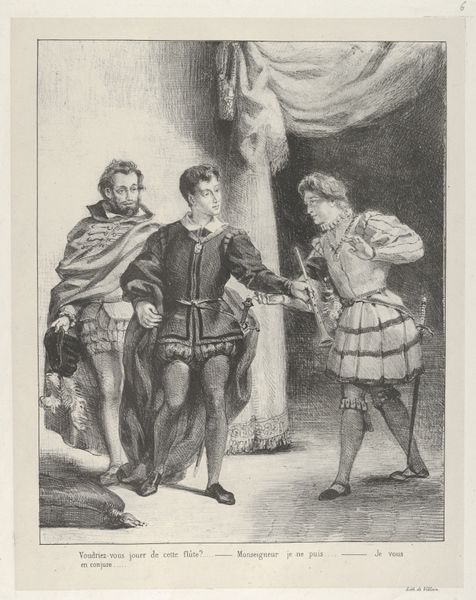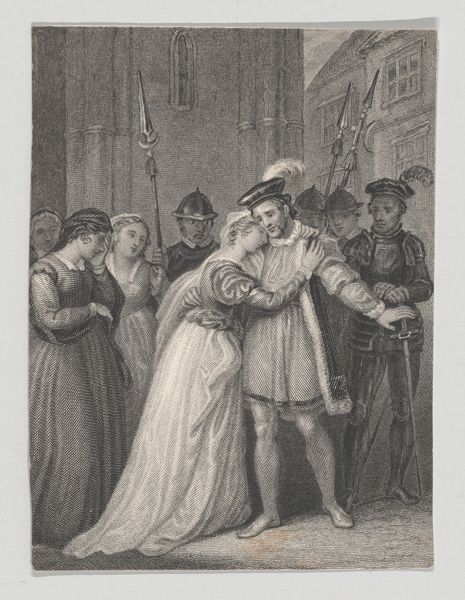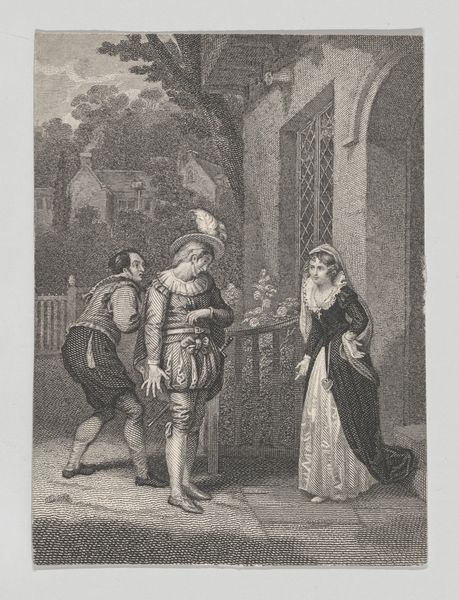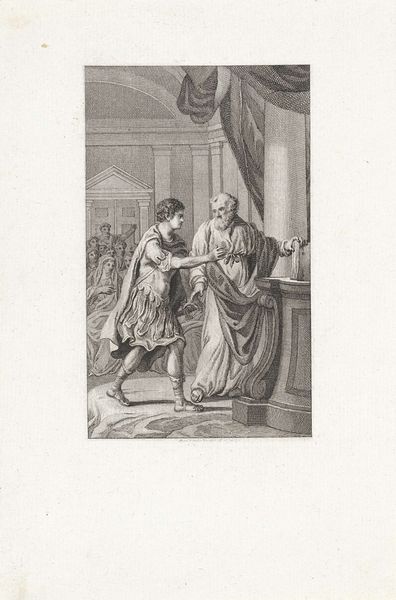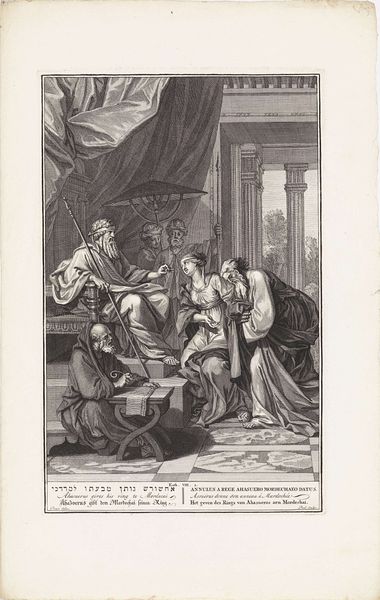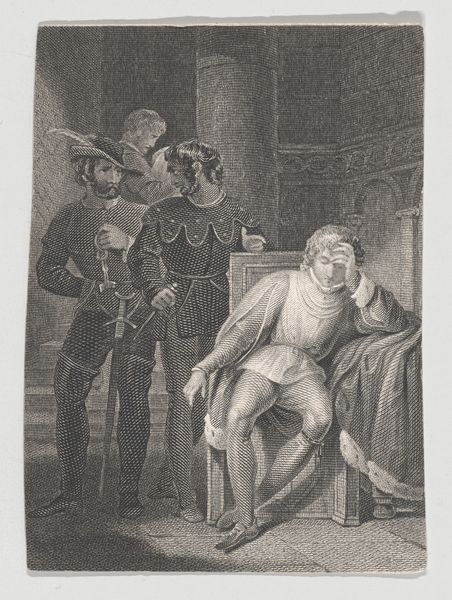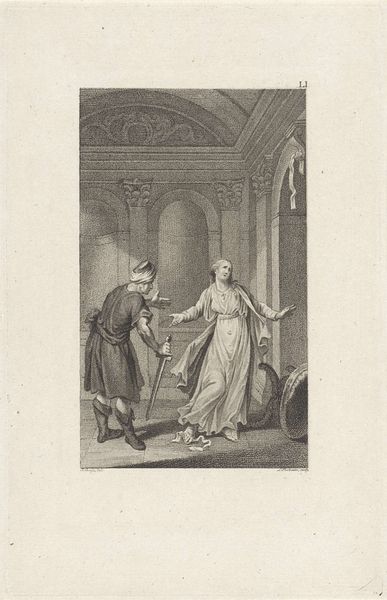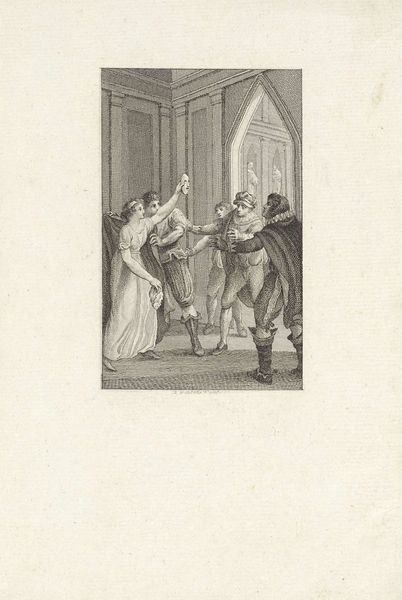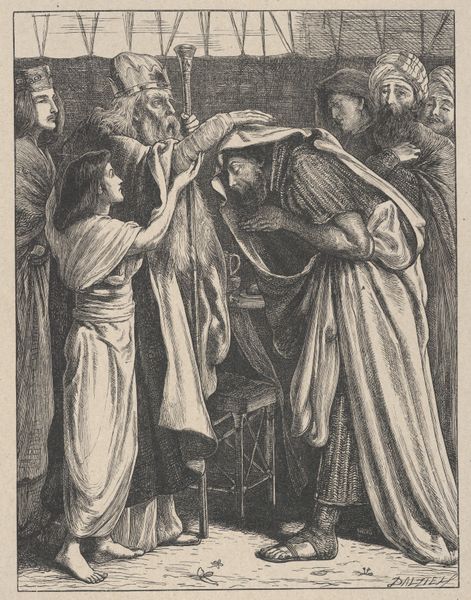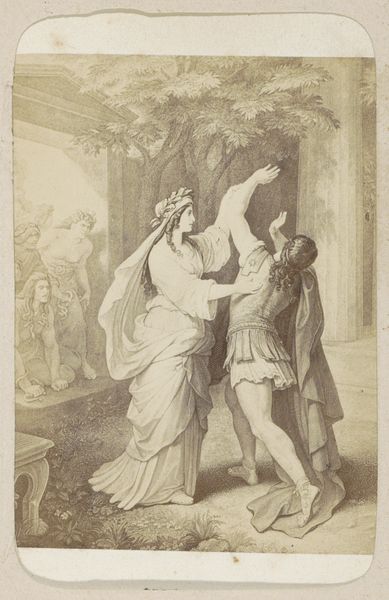
Queen Margaret and Suffolk (Shakespeare, Henry VI, Part II, Act 3, Scene 2) 1825 - 1840
0:00
0:00
drawing, print, engraving
#
drawing
#
narrative-art
# print
#
figuration
#
romanticism
#
history-painting
#
engraving
Dimensions: Sheet: 3 7/16 × 2 9/16 in. (8.8 × 6.5 cm)
Copyright: Public Domain
Curator: My first impression is a hushed, dramatic scene. It feels like a secret shared in the shadows. Editor: Indeed. This is an engraving of "Queen Margaret and Suffolk," illustrating a scene from Shakespeare’s Henry VI, Part II. It was created sometime between 1825 and 1840 by Charles Heath, the elder. Curator: Heath really captured the weight of their clandestine relationship. Her gentle touch, his pained expression – it all hints at turmoil, doesn’t it? You almost feel like you're intruding on a private moment. I find the contrast of her lightness against his shadowy face so moving. Editor: Let’s consider the material context. Engravings like these were, in their time, a crucial way to disseminate imagery, allowing scenes from high culture, like Shakespeare, to reach a broader audience. The relatively inexpensive print allows mass distribution of the high subject manner, blurring the line between art and the public good, but how can art serve social class and function to maintain control simultaneously? Curator: I like how you're approaching the print as almost propaganda. I look at it though, and I mostly think about the light, which seems to highlight the tender care depicted in their faces. Editor: That contrast is definitely heightened through the engraving process. Each line, etched painstakingly into the metal plate, dictated the light and shadow we see. This was painstaking labour, making this moment accessible through industrial means. Curator: There's an undeniable artistry in taking something so dramatic and grand from the stage and shrinking it down into something so intimate. It really boils down their relationship to its emotional core. Editor: Exactly! And in this print, distributed and consumed, it solidifies those narratives, contributing to the ongoing construction of history and our understanding of power structures. The way images travel informs how power works and impacts audiences. Curator: I still lean into the personal—to me, that’s a real moment caught in ink. Editor: For me, seeing those emotional sparks embedded into this social machinery… that's where things get interesting.
Comments
No comments
Be the first to comment and join the conversation on the ultimate creative platform.

